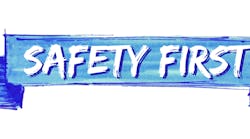Safety documentation in dental practices: OSHA and CDC
Dental team members typically take great care to ensure that their patient records follow regulations and guidelines for documentation of patient treatment. These are vital elements of risk management in health-care settings. But beyond the required documentation for clinical treatment and financial transactions for patient care, there are other types of documentation that are required for dental practices.
The most notable of these is OSHA compliance and infection prevention and control documentation. This documentation is essential in the case of an OSHA inspection, since OSHA will assume that if elements such as training are not documented, they have not been done. In addition, documentation of safety protocols, especially in infection prevention and control, assists a practice in meeting state dental board requirements. It also serves as compliance with the infection prevention guidelines from the Centers for Disease Control and Prevention (CDC).
But an even more important element is that documentation of safety procedures serves as a guidepost for a dental practice to monitor the ongoing implementation of safety protocols. Documentation of safety protocols aids in informing employees about what is expected of them, and this gets everyone on the same page in performing safety tasks uniformly and consistently.
While many dental practices have purchased or created their own OSHA compliance manual to meet many of these requirements, it doesn’t appear that this documentation is regularly reviewed updated. Additionally, many times the OSHA compliance information that a practice has may not take into consideration CDC recommendations and compliance issues mandated by a state dental board or state or local health department.
We will examine some key elements of compliance documentation, but first let’s clarify the difference between OSHA rules and CDC guidelines.
- OSHA rules have the force of law and are meant to protect the safety of employees. For example, the OSHA Bloodborne Pathogens Standard was implemented to help protect employees from occupational exposure to bloodborne and other infectious diseases. Failure to comply can result in citations and fines.
- The CDC is recognized as the federal agency that establishes safety recommendations for both patient and employee safety. The CDC’s Guidelines for Infection Control in Dental Health-Care Settings is considered the standard of care for infection control and prevention in dentistry.1 This document and the subsequent Summary of Infection Prevention Practices in Dental Settings–Basic Expectations for Safe Care–2016 outline the elements of an infection prevention or exposure control program.2
- In addition, every dental health-care worker needs to be aware of infection prevention and control requirements, including documentation required by their state dental board or health department. In most cases this means following CDC guidelines and recommendations, but more specific requirements may be implemented.
What needs to be documented?
According to OSHA, the most critical documents that a dental practice must have in place are safety plans for exposure control (infection prevention and control), hazard communication (chemical safety), and general workplace safety (includes identification of trip and fall hazards, safe operation of equipment, and prevention of workplace violence). The CDC guidelines also recommend that the practice have a written infection control and prevention plan.
The exposure control plan must detail all of the protocols that a practice follows to prevent the exposure of employees to bloodborne and other infectious diseases. A common error that some practices make is adopting an exposure control plan that comes with a compliance manual that they have purchased. Many times, the practice will simply fill in the blanks for the practice information (name, address, etc.) and call it good. These plan templates must be customized for each practice setting, detailing things such as protocols for treatment room decontamination, instrument reprocessing, and handling of potentially infectious waste. The safety plans must be reviewed and updated at least annually, according to OSHA.3,4
The second of the critical documents OSHA requires is training records. All newly hired employees must be trained in infection prevention and control as well as chemical safety and general workplace safety prior to performing any work tasks that may put them at risk of exposure to potential hazards. The training, according to OSHA, must be specific to the procedures and tasks in the workplace. In addition, annual training updates must be provided for all employees. Training documentation must include the dates of the training, the employees who attended the training, the topics discussed, and the name and credentials of the person who provided the training. Records of OSHA-required training must be maintained for three years.3
Other documentation that is required by OSHA
- ·An exposure determination to document which employees are at risk for contact with bloodborne pathogens while performing their routine job tasks
- Hepatitis B vaccination records, and/or declination statements for employees who decline the hepatitis B vaccination
- Injury or exposure incident reports
- A hazard assessment to determine what types of personal protective equipment (PPE) is needed to protect employees from exposure to infectious diseases, chemicals, and other hazards
- An assessment of the incidence of sharps injuries in a practice and investigation of safer devices (e.g., needle recapping devices or safety syringes) for possible implementation in the workplace
- Records of sterilizer monitoring and maintenance
- An inventory list of products containing hazardous chemicals and corresponding Safety Data Sheets
- OSHA safety poster(s)—OSHA Publication 3165 (federal) and any state-required posters
More information about OSHA-required documentation is available at osha.gov. It is also important to note that while it is not an OSHA requirement, states require documentation of the disposal of biohazardous waste, such as sharps containers and some chemicals. These requirements are part of a state’s medical waste laws and regulations.
Do OSHA and CDC require a specific format for documentation?
Except for OSHA’s injury report forms, which are required for some practices, OSHA focuses on content rather than format for documentation. The CDC also does not require a specific format for infection prevention and control, but like OSHA, the CDC has recommendations about content. This information is available in OSHA’s Bloodborne Pathogens Standard and the CDC’s Guidelines for Infection Control in Dental Health Care Settings—2003, and Summary of Infection Control Practice in Dental Settings.
A dental practice can use forms and templates in a purchased manual, access forms from various compliance sites such as Hu-Friedy’s GreenLight Compliance Center, or design their own forms, provided that the elements required in the various standards are included in those documents. The Bloodborne Pathogens Standard and the Hazard Communication specify the types and content required for documentation. In past years, OSHA inspectors were reluctant to accept electronic documentation, however, OSHA will now accept electronic records, including electronic copies of Safety Data Sheets.
Creating electronic documentation for compliance is much more efficient than creating and maintaining paper documentation. Updating safety plans and chemical inventories is much more streamlined when working with electronic files. In addition, these files can be easily backed up and made accessible to all employees via the safety documentation on the practice’s server.
It is very important for dental practices to know whether they are governed by federal OSHA rules or state OSHA-plan rules, since many state OSHA-plans have more stringent rules or documentation requirements. Visit osha.gov for a list of OSHA-plan states. Each of the state OSHA-plan sites can be accessed through the OSHA website.
Is an employer required to designate a safety manager?
Yes, OSHA does require that a safety manager, OSHA coordinator, or compliance officer be appointed or designated in every workplace. The CDC recommends the appointment of an infection prevention and control coordinator. The same person can serve both functions.
The challenge that many dental practices face in complying with this requirement is that whoever the practice designates as the safety manager most likely has other and more time-consuming duties in the practice. This leaves a very limited amount of time the person has to dedicate to compiling, maintaining, and updating documentation. Another challenge is staying current on compliance update information.
If a member of the team is designated as the safety manager, the person must be aware of various resources for updated information. These resources may include national and state dental organizations, such as the American Dental Association at ada.org, the Organization for Safety Asepsis and Prevention at osap.org, and the Hu-Friedy GreenLight Compliance Center at hu-friedy.com/greenlight.
There are other resources available on a state and local levels through compliance consultants and businesses dedicated to assisting with safety compliance. Using these resources as partners in achieving compliance with OSHA and infection control and prevention protocols can prove invaluable to practices in order to enhance workplace and patient safety.
References
1. Centers for Disease Control and Prevention. Guidelines for Infection Control in Dental Health-Care Settings–2003, https://www.cdc.gov/mmwr/PDF/rr/rr5217.pdf. Published December 19, 2003.
2. Centers for Disease Control and Prevention. Summary of Infection Prevention Practices in Dental Settings–Basic Expectations for Safe Care–2016. https://www.cdc.gov/oralhealth/infectioncontrol/pdf/safe-care2.pdf. Published October 2016.
3. Occupational Safety and Health Administration Bloodborne Pathogens Standard. https://www.osha.gov/pls/oshaweb/owadisp.show_document?p_id=10051&p_table=STANDARDS. Effective March 6, 1992.
4. Occupational Safety and Health Administration Hazard Communication Standard. https://www.osha.gov/dsg/hazcom/index.html.
Mary Govoni, MBA, RDH, CDA, is a recognized speaker, author, and coach on clinical efficiency, ergonomics, OSHA and HIPAA compliance, and team communication. Govoni is a past president of the American Dental Assistants Association, and a member of the American Dental Hygienists Association, the Organization for Safety Asepsis and Prevention, the Academy of Dental Management Consultants, and the Speaking and Consulting Network.







